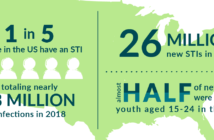
Here in Florida the water used every day for showers, toilets, faucets, gardening, and watering lawns mostly comes from the aquifer. However, during times of drought the aquifer becomes scarce in fresh, usable water and that is where rainwater comes into play.
Rainwater is a natural resource that can be used for multiple activities once captured, stored, and treated properly. There are also a multitude of benefits to capturing and using rainwater tasks such as flushing the toilet, gardening, and watering lawns. Rainwater collection can capture, divert, and store rainwater for use later on as an alternative form of water supply. With proper filtration, care, and safety rainwater can even be clean enough to be used as drinking water or for water used in food preparation.
According to TreePeople, a Los Angeles based organization dedicated to the preservation of nature and finding nature-based solutions, there are other benefits to capturing rainwater including conserving water, improving water quality, reducing flood flows, and saving money.
Captured rainwater can seep into the ground and enter the aquifer or be used for irrigation. Using captured rainwater can also reduce the use of potable water for things such as watering the lawn and trees, washing cars, flushing toilets, and more. This is important because potable water is the water that is suitable for drinking.
In other words, precious drinking water is being used to flush the toilet. The use of rainwater would reduce this and it would also reduce the need to import fresh drinking water. Also, since using rainwater for lawns and toilets saves drinking water and it is water that has not come from the local water company, the water bill would be lower.
Usually, when rain falls and eventually ends up in streams, rivers, and oceans, it takes all the materials it basically washed away with it. This includes whatever pesticides or other sorts of pollution found in lawns, streets, and farms. Since some of the rainwater is being stored once captured in rainwater collection, it actually reduces the pollution runoff that makes its way into those streams and rivers from urban and rural areas. Collecting the rainwater that normally becomes polluted runoff would also decrease local and downstream flooding during extreme periods of rainfall, such as harsh storms.
However, there are some downfalls to rainwater collection. In areas where there is little and often unpredictable amounts of rainfall, capturing rainwater can be difficult and limited. Capturing rainwater is best for areas where there is high amounts of rainfall. Also, there is the initial cost to consider and what kind of rainwater systems are on the market. Some collection systems can range from anywhere from $200 to $2000 and the collection system would require regular maintenance to keep out bugs and animals.
Another disadvantage to capturing rainwater is the fact that some systems use roofs and gutters to collect the rain. There are certain types of roofs that may regularly collect chemicals, animal droppings, or bugs on them that can pollute the collected rainwater. There is also the matter of how much rainwater that can be collected at any given time. Storage systems vary in size but all have a maximum limit of what they can hold.
A tidbit that the CDC would have everyone remember when thinking about rainwater collection is that rainwater on its own is not as pure as regular drinking water. Natural rainwater often has a number of different types of contaminants in it such as bacteria. If anyone wants to try and employ rainwater as a source of drinking water then they have to buy equipment like filters, a first flush diverter, or water storage devices (cistern) intended to provide drinking water.




